Advances in technology, despite their benefits, often coincide with spikes in fear, paranoia, and doubt. Just as the internet has fertilized the deep, rich soil of conspiracy theory, the rise of photography and the birth of modern spiritualism in the nineteenth century are inextricable. Purported paranormal encounters, previously the realm of rumor and candlelit retelling, could now be reproduced and circulated in so-called spirit photographs. Emboldened by new forms of communication such as the electric telegraph, more and more people sought to commune with the beyond; séances experienced a boom in popularity. In the midst of all this excitement about lost souls, scientists stayed committed to their constant mission: pinning down how the world works. The magician and psychologist Matthew L. Tompkins’s new book, The Spectacle of Illusion, chronicles the struggles of the scientific community to understand—and sometimes debunk—the illusions and mysteries that have so captivated the general public since the eighteenth century. A selection of archival photographs and illustrations from the book appears below.
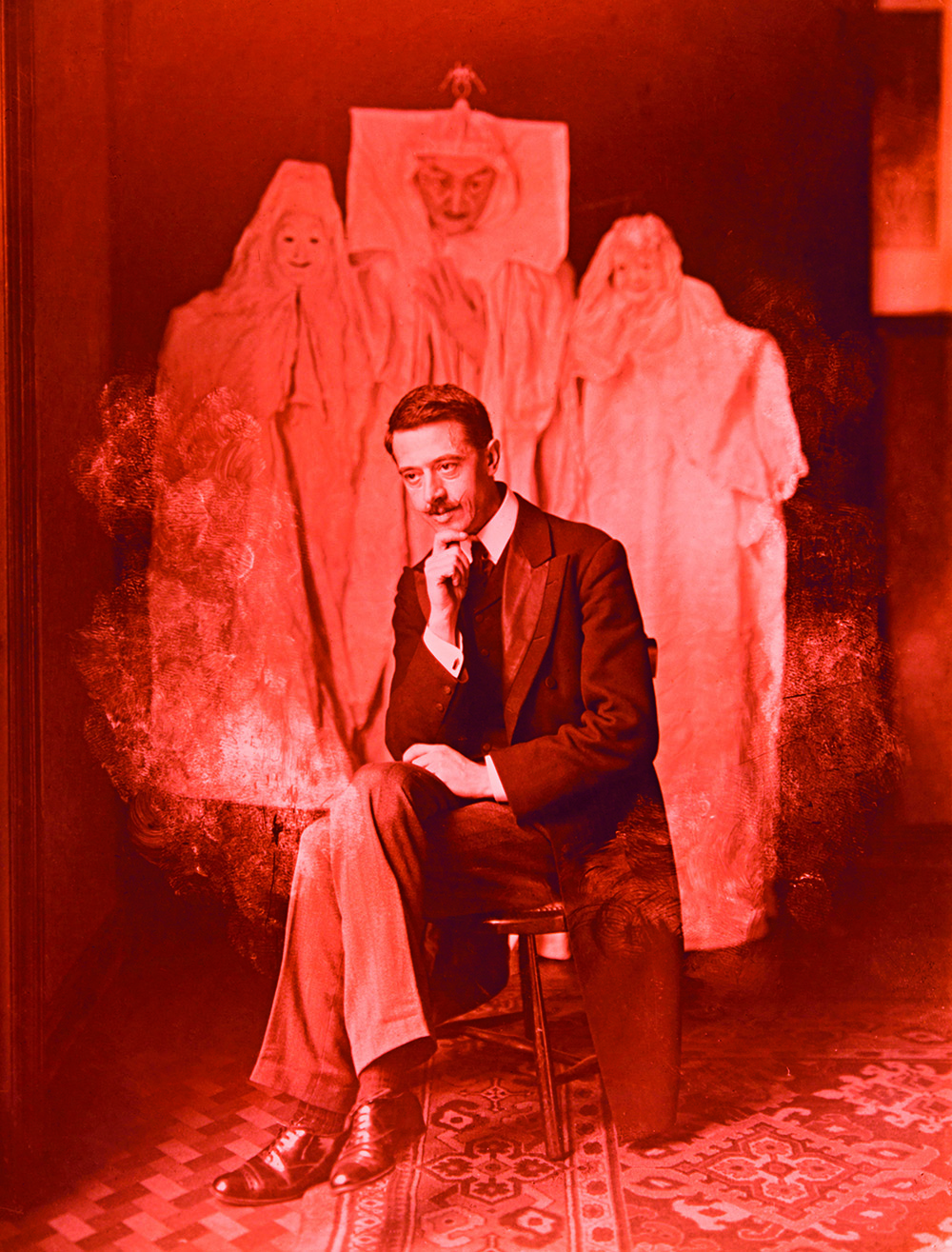
William S. Marriott seems lost in deep thought as a trio of mysterious spirit forms approach him. The magician worked tirelessly to expose the tricks that mediums used to exploit credulous individuals, who may well have been seeking contact from recently deceased loved ones. Marriott and Three Ominous Materializations, 1910. Image from The Spectacle of Illusion, published by D.A.P. Courtesy of the Wellcome Library, London.
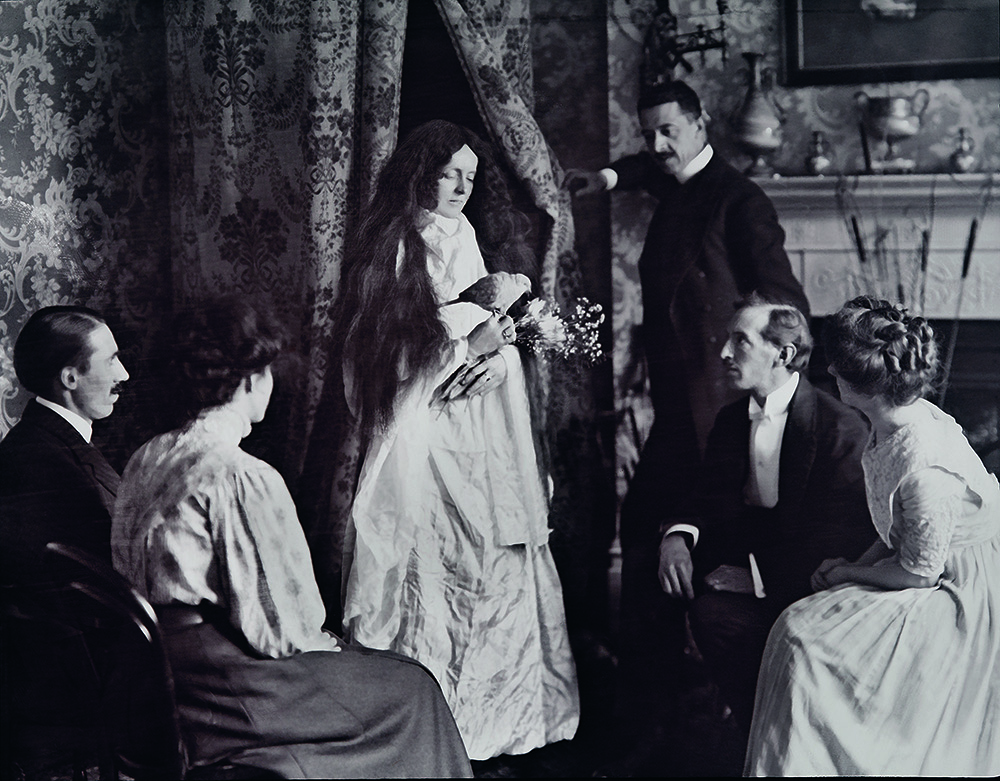
The magician William S. Marriott stands in the background, ostensibly witnessing the emergence of a female apparition carrying a “spirit” bird and flowers. This was one of many glass lantern slides used by the psychic investigator Harry Price in his talks, to demonstrate the methods and equipment regularly used by fraudulent mediums at the time. A Seance in Progress. Image from The Spectacle of Illusion, published by D.A.P. Courtesy of the Wellcome Library, London.
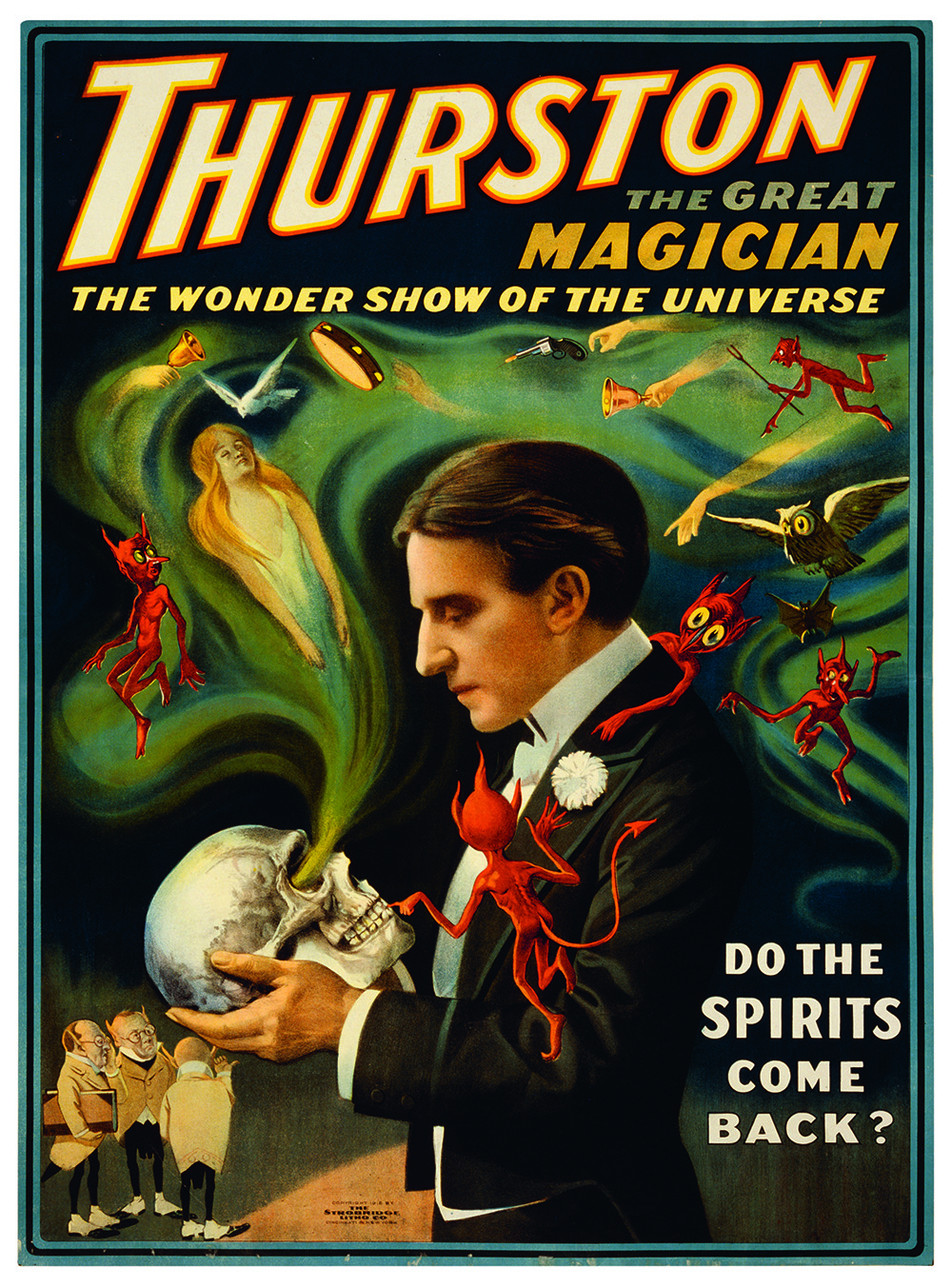
This poster plays on the public’s fascination with mysticism and the supernatural, which Thurston consciously exploited in his act. Ethereal Appeal, ca. 1915. Image from The Spectacle of Illusion, published by D.A.P. Courtesy of the Wellcome Library, London.
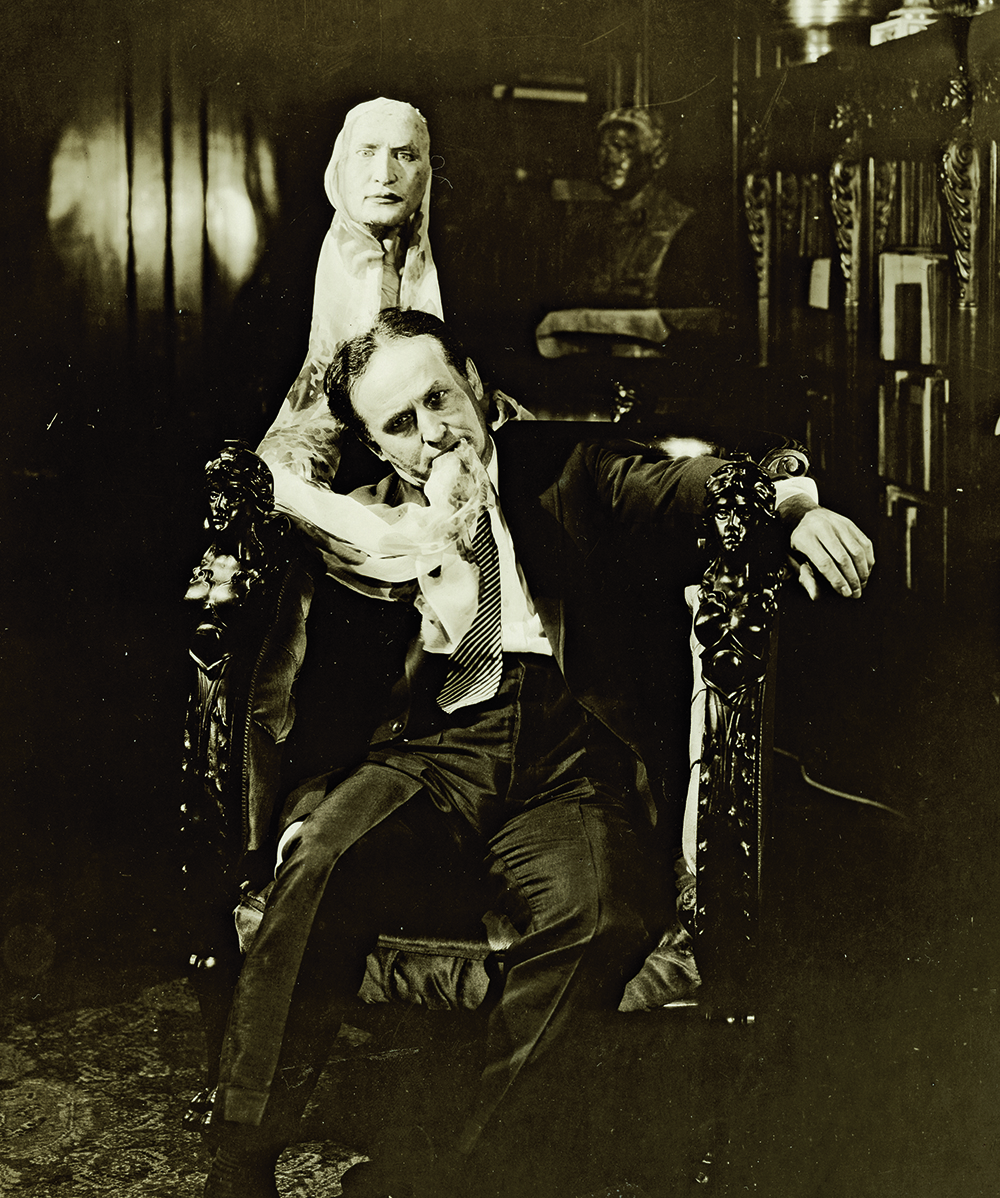
In this doctored photograph, Harry Houdini fakes a spirit photograph by appearing in ghostly form behind his own seated self. A Materialization, ca. 1920. Image from The Spectacle of Illusion, published by D.A.P. Courtesy of the Wellcome Library, London.
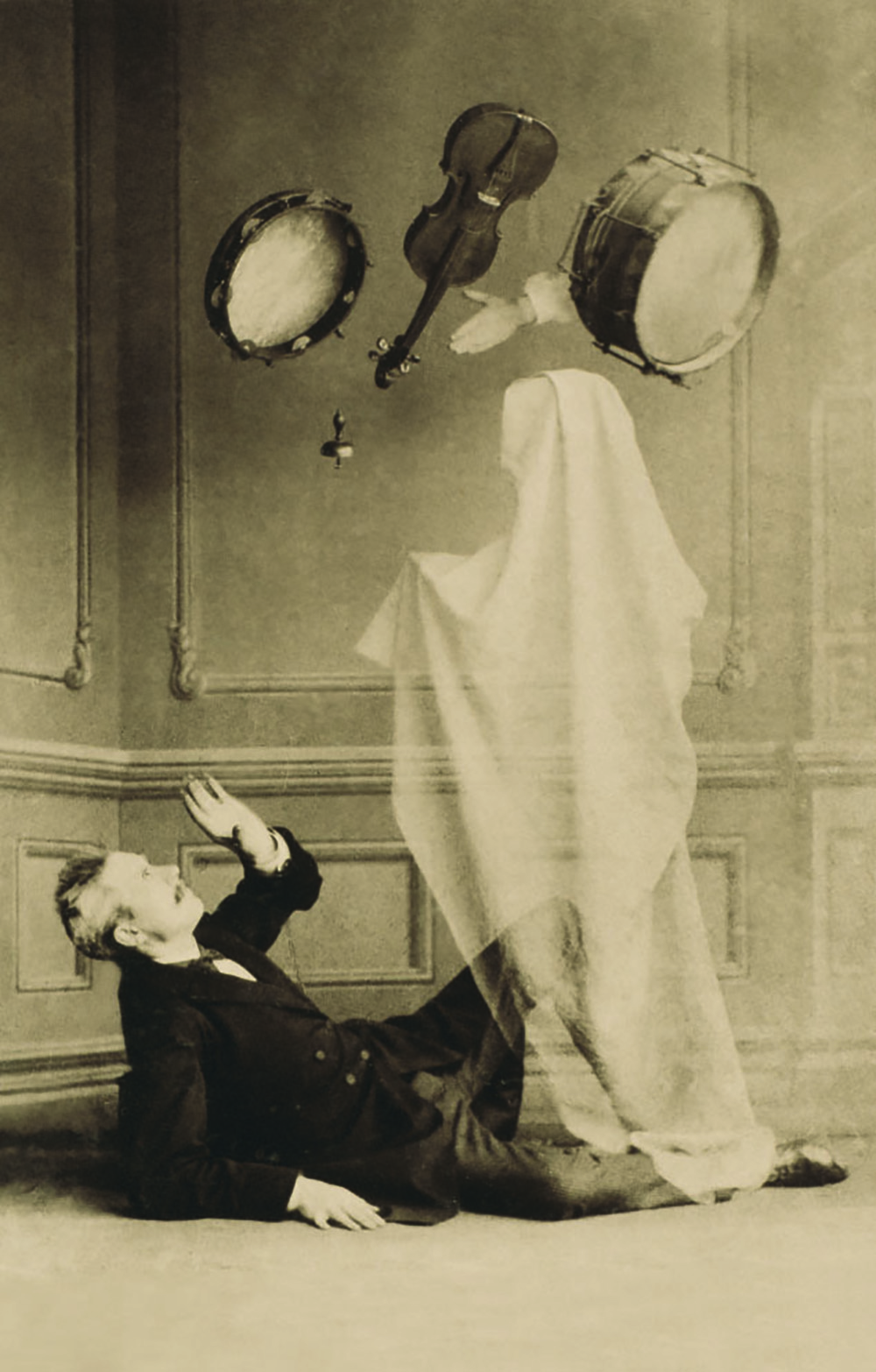
The German magician Jacoby-Harms (a.k.a. Hans Joachim Jacob Harms) appears to be overcome at the sight of airborne instruments. Ghostly Presence, 1866. Image from The Spectacle of Illusion, published by D.A.P. Courtesy of the Wellcome Library, London.
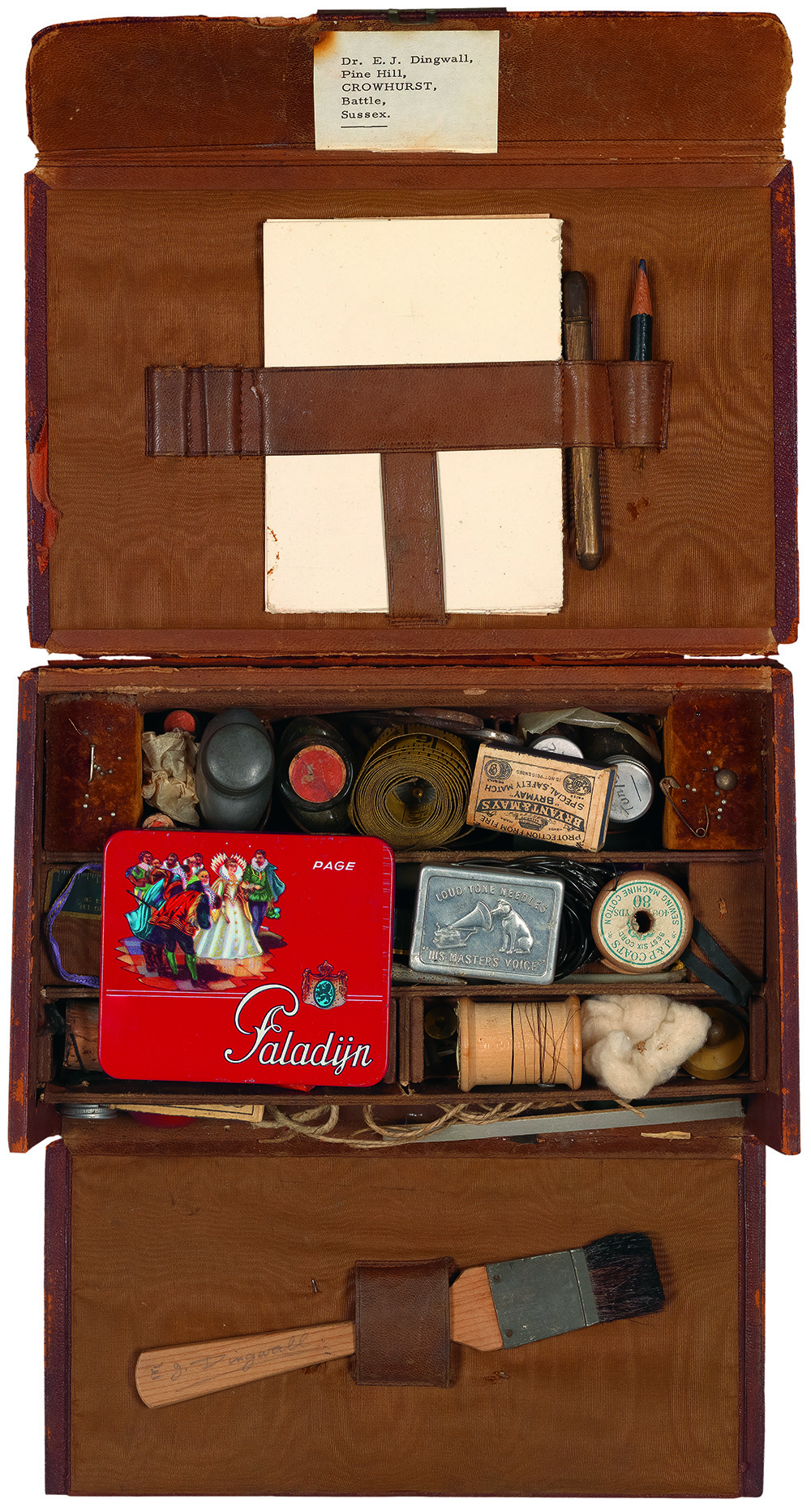
This leather box contains a variety of tools used by the psychic investigator Eric Dingwall to investigate apparent instances of the paranormal. Ghost-Hunting Kit. Image from The Spectacle of Illusion, published by D.A.P. Courtesy of the Wellcome Library, London.
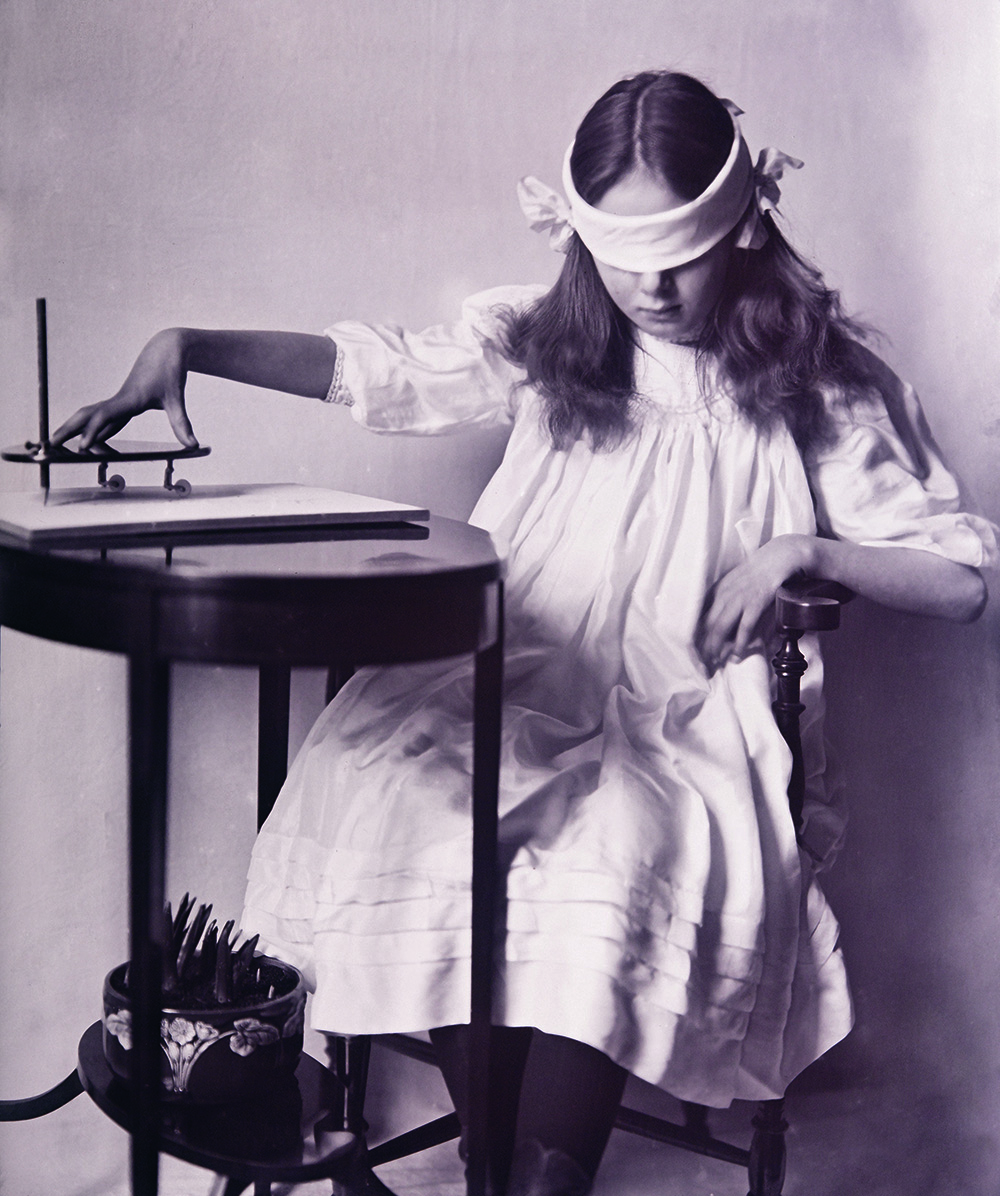
This photograph from the collection of the magician William Marriott shows a young girl operating a planchette. Spiritualists claimed that mysterious external forces would guide the user’s hands, generating written messages. Early psychologists argued that the forces moving the planchette were unconscious muscle actions driven by the user’s mind. Operating a Planchette. Image from The Spectacle of Illusion, published by D.A.P. Courtesy of the Wellcome Library, London.
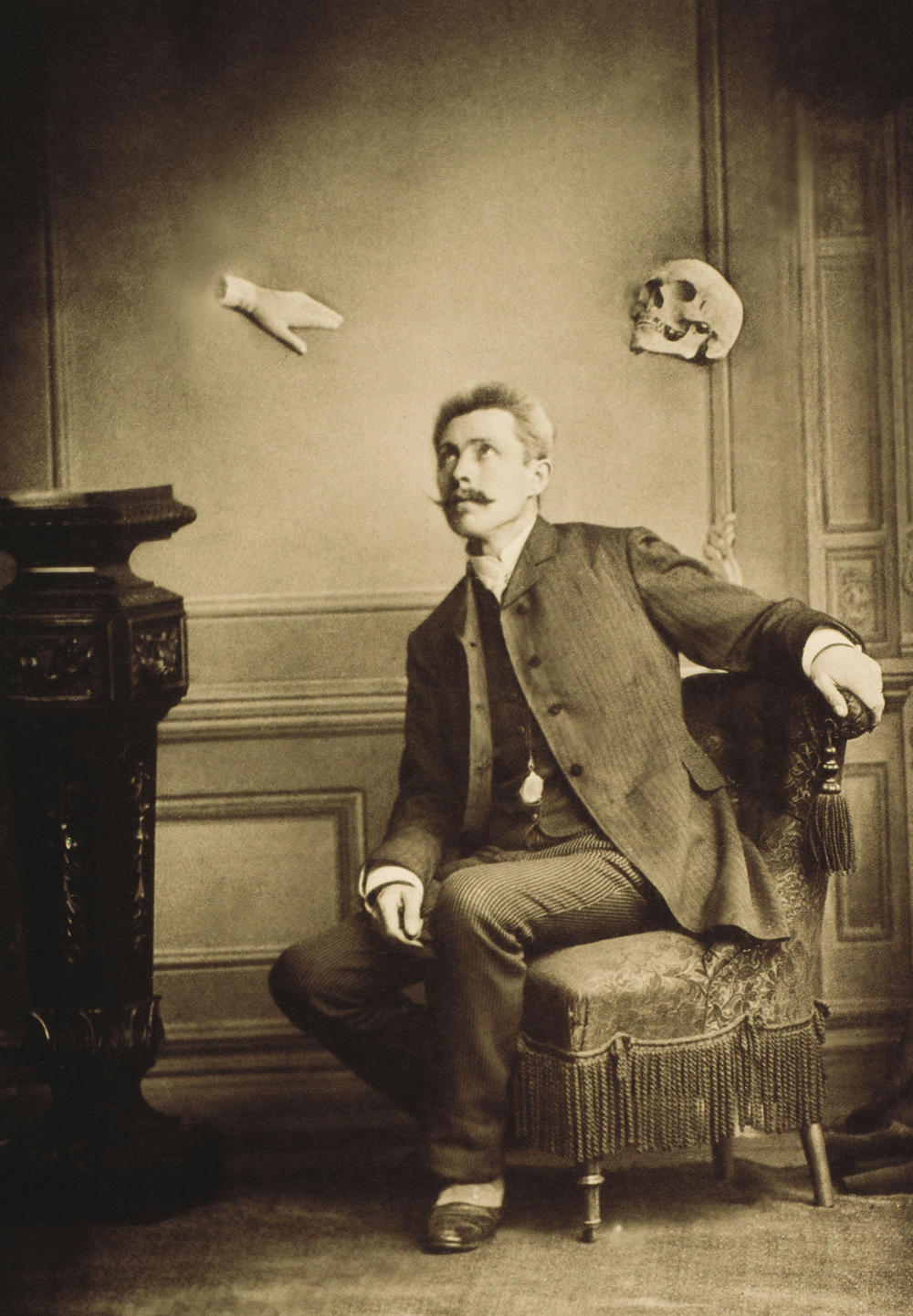
Again, Jacoby-Harms is bemused by objects floating above. Both photographs were created by F. A. Dahlström, using double exposures. Floating World. Image from The Spectacle of Illusion, published by D.A.P. Courtesy of the Wellcome Library, London.
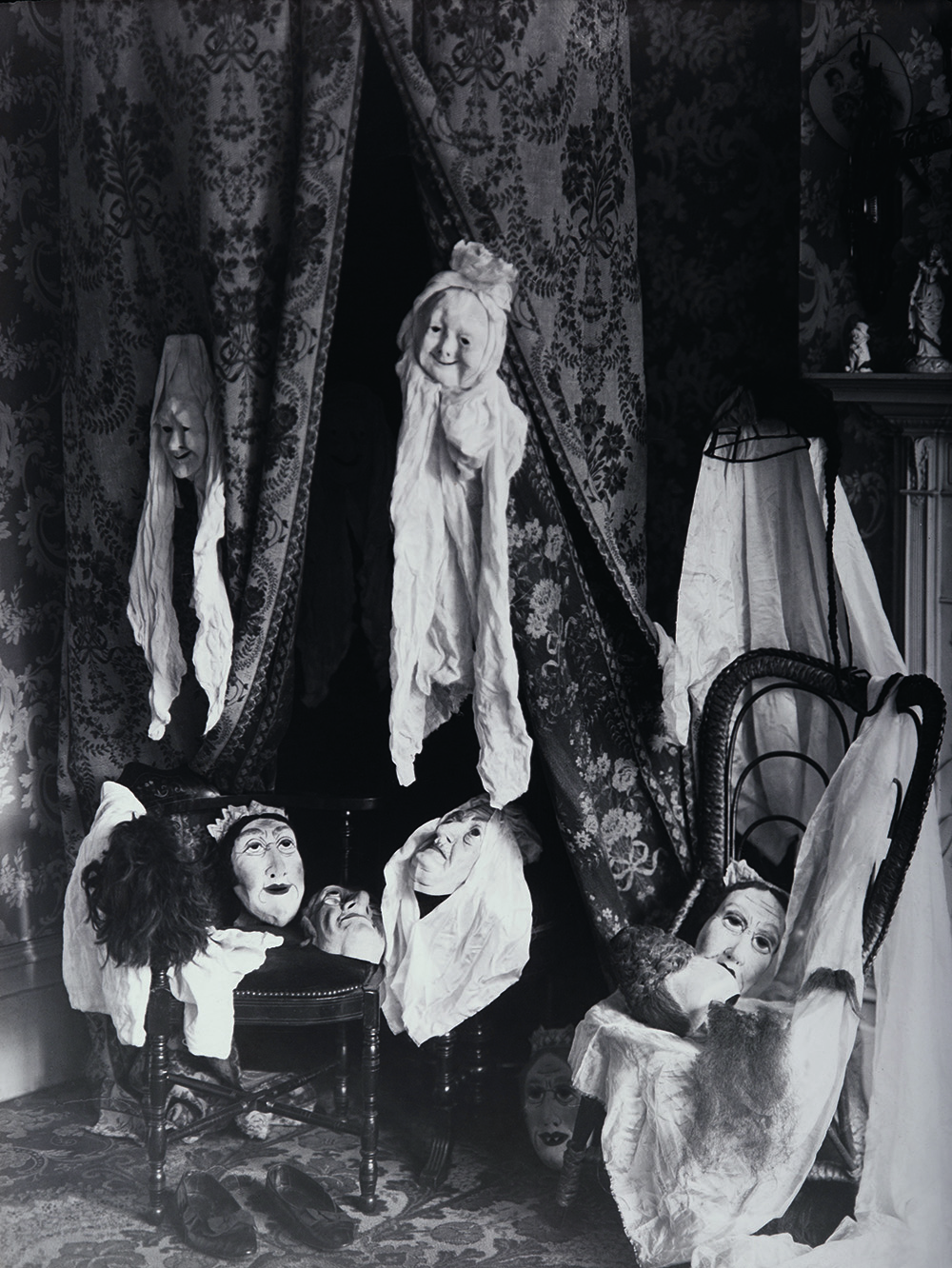
An example from Harry Price’s archive, this photograph shows props that disreputable mediums sometimes used. Seen here are masks, dummies, wigs, and cheesecloth that might serve as ectoplasm. Unconvincing in the light, these would assume an altogether more impressive character in the tense atmosphere of a séance in a dark room. A Medium’s Tools of the Trade. Image from The Spectacle of Illusion, published by D.A.P. Courtesy of the Wellcome Library, London.
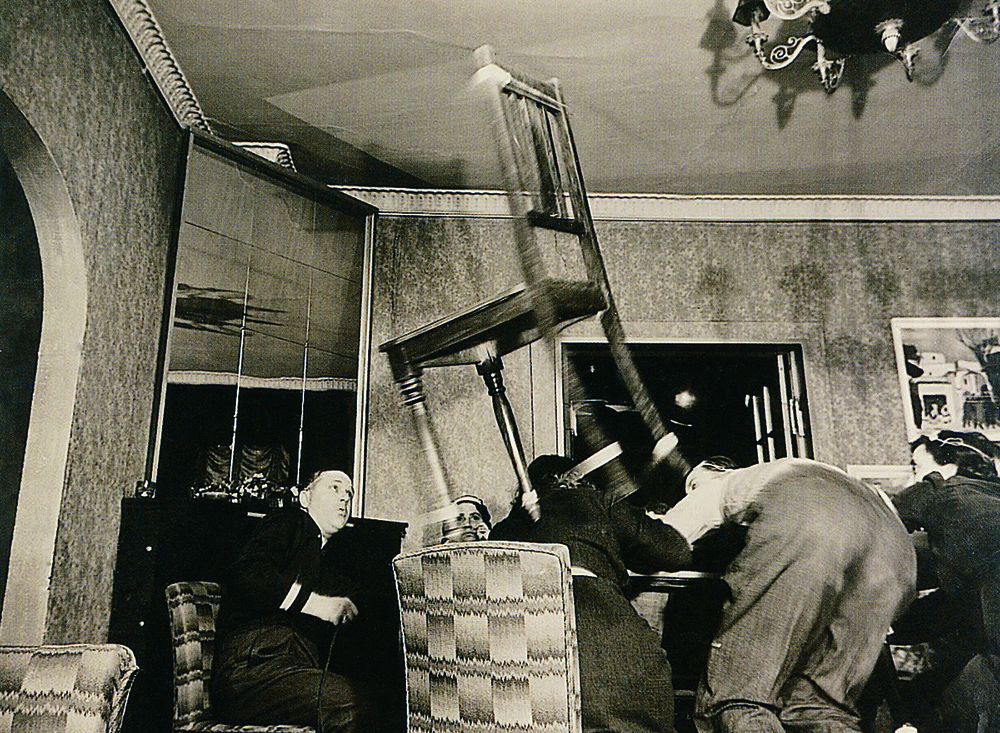
This photograph records one of the levitation séances that were held at the home of the Danish photographer Sven Türck in the forties. In 1945, Türck published his findings in a book entitled Jeg Var Dus Med Aanderne (I was on familiar terms with the spirits). The airborne figure seen opposite is believed to be Børge Michaelson, a medium. Experiments in Levitation. Image from The Spectacle of Illusion, published by D.A.P. Courtesy of the Wellcome Library, London.
All images from The Spectacle of Illusion, by Matthew L. Tompkins, published by D.A.P.
from The Paris Review http://bit.ly/2J4bm4l
Comments
Post a Comment